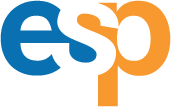Once upon a time…an IT pro wished above all else for a successful interview.
Fortunately, IT job seekers and contract professionals don’t need a fairy godmother to grant this wish. We’ve said it before and we’ll say it again: the best interviews are conversations, not interrogations. And in order to keep your interviewer engaged in your conversation, you need to know how to tell a good story. Fortunately, we have tips for telling three key stories in your next interview.
Think back to your childhood: to the stories you heard at bedtime, at school, around the campfire. In some ways, wasn’t the experience of being told a story just as enjoyable as hearing the story itself? Similarly, a successful interview requires good storytelling. A story told right is memorable and interesting, gives you substance, and will help hiring managers separate you from the pack of paper resumes and interviews they’ve conducted. Answer the following questions to help you prepare your stories in advance, and you’ll be sure to captivate your audience.
1. The “About You” Story: Introduce The Protagonist
Many interviewers will begin by asking you to: “Tell me about yourself.” While it’s fine to reveal some personal things about yourself — like where you grew up or your favorite hobby — this is not the time to detail your entire life history. This is your introduction story.
What does your audience want to know? Though the “about me” question can serve as a great opportunity to begin building a connection with your interviewer, remember that this question mainly seeks to uncover details about you as an IT professional. The most important information to include will be: your career goals, interests in the field, and value as a potential employee or consultant. However, keeping your answers professional does not have to lead to a “boring” interview. Incorporate key information into your introduction story – using anecdotes of what about technology interested you and how you developed your specific skill sets. Draw your interviewer in with a story about how the website you developed as a teenager got you interested in a tech career; or exhibit your flexibility by citing specific examples of times when you put that skill to use. Not only does telling these stories allow you to showcase your personality, but it also helps to validate the information you are sharing.
What do you and your interviewer have in common? You want your audience to connect with you as the protagonist of your “about me” story, and research shows that people are more likely to feel invested in others when they share common ground. If possible, try doing a bit of research on your interviewer prior to your interview, and make note of any commonalities between you. Perhaps you attended the same university, or went through a similar career change. If so, incorporating that information into your anecdotes can help you to establish rapport with your interviewer. If you don’t notice any immediate similarities between yourself and your interviewer, search for differences that you may be able to draw attention to, or opportunities to ask your interviewer more about XYZ aspect of his or her career. One of the best ways to draw your interviewer “off script” is by connecting with him or her over the reason that filling this position is a priority. If possible, try to end your “about me” story by drawing a connection between your skills sets and what you perceive to be the “gap” this position is seeking to fill. Don’t be afraid to ask you interviewer questions to get him or her to participate in this dialogue.
2. The “Overcoming A Challenge” Story: Kick Off The Inciting Incident
When asked to describe an experience in which you overcame a conflict or challenge at work, you want to tell the story in a way that highlights the skills necessary to succeed in the IT position for which you’re interviewing and/or show that your ideals align with those of the hiring company.
Engross your audience – why was this a challenge? Give weight and substance to the challenge you faced, compelling your audience to wonder what could have happened if things hadn’t gone your way. Make sure to explain why the situation was challenging to you. What external professional/personal factors made things even more challenging? Were your own knowledge gaps the greatest hindrance to a quick solution? It’s okay to show some vulnerability; it’s important to keep the listener invested in the outcome. But on that note, be sure to center the main focus of your story around the professional aspect of your challenge. Though personal details may have played a part, you’ll want to avoid oversharing personal details, remembering that your interviewer is seeking to identify your assets as a potential employee or IT contract employee.
What was the end result? Conclude your story with a brief reflection of what you learned. More than likely, you didn’t do everything perfectly your first time handling a new challenge. Why were the mistakes you made important growing opportunities for you? Explain how the lessons you learned strengthened you as a potential employee, making sure to mention the changes/improvements you would make to overcome a similar challenge in the future. On the other hand, don’t forget to give yourself credit for the things you did right. When describing how you approached the situation and why, make sure to emphasize what the resolution of the conflict meant for your company or team — and your role in making it happen. Whether it was your innovation, perseverance, or positivity that helped you to get through the challenge, highlight the assets that your story showcases you bringing as a potential hire.
3. The “Strengths” Story: Develop Your Character
Don’t just say that you’re innovative, passionate, and detail-oriented; tell the story to back it up, while playing up the strengths that are most relevant to the position.
What specifics can you share to impress? If you’re interviewing for a position as a project manager, provide an anecdote of an instance in which you demonstrated leadership. You’re the protagonist of your story, and you want the interviewer to understand and like your character. Vague descriptors will not be as evocative as specific, relevant details. Describe the actions you took to reach a specific outcome, providing tangible benefits and results rather than a glossed-over explanation. What sounds better: “my efforts increased engagement with the website” or “by the end of the month, the improvements to the website had attracted over 5,000 additional visitors”? Likewise, instead of describing yourself as detail-oriented or organized, cite specific ways that these traits play into your daily productivity. Are you big on to-do lists? What is one instance that your lists helped you to stay on track and accomplish a large goal?
How long is too long? Remember: nothing kills an interview like a long-winded tale. Aim for concise and interesting responses. Kurt Vonnegut – famous for his written short stories – advises story-tellers to: “Start as close to the end as possible” and “give your (audience) as much information as possible as soon as possible” in order to craft an engaging short story. This means that you should avoid going into long “background” stories, or using “even as a child I liked to organize my blocks…” as an anecdote to reflect your personality. What are you doing now that is significant and showcases your strengths? Not all anecdotes require additional information, and you can strategically leverage any “gaps” in your story as opportunities for your interviewer to engage with you and ask follow-up questions. Learn to command the brevity of your interview stories by practicing them in front of others before your interview for a smooth delivery.
Why is storytelling the key to a successful job interview? Stories are a key component of good branding. Like strong brands, strong stories are unique, memorable, and captivating. Market your personal “brand” successfully in the job interview by mastering the art of storytelling, and you’re sure to leave a lasting and positive impression on your interviewer.
For more interviewing tips, visit our website.
Editor’s Note: This blog was originally published in 2013, and has been revamped to reflect updated industry best practices.



